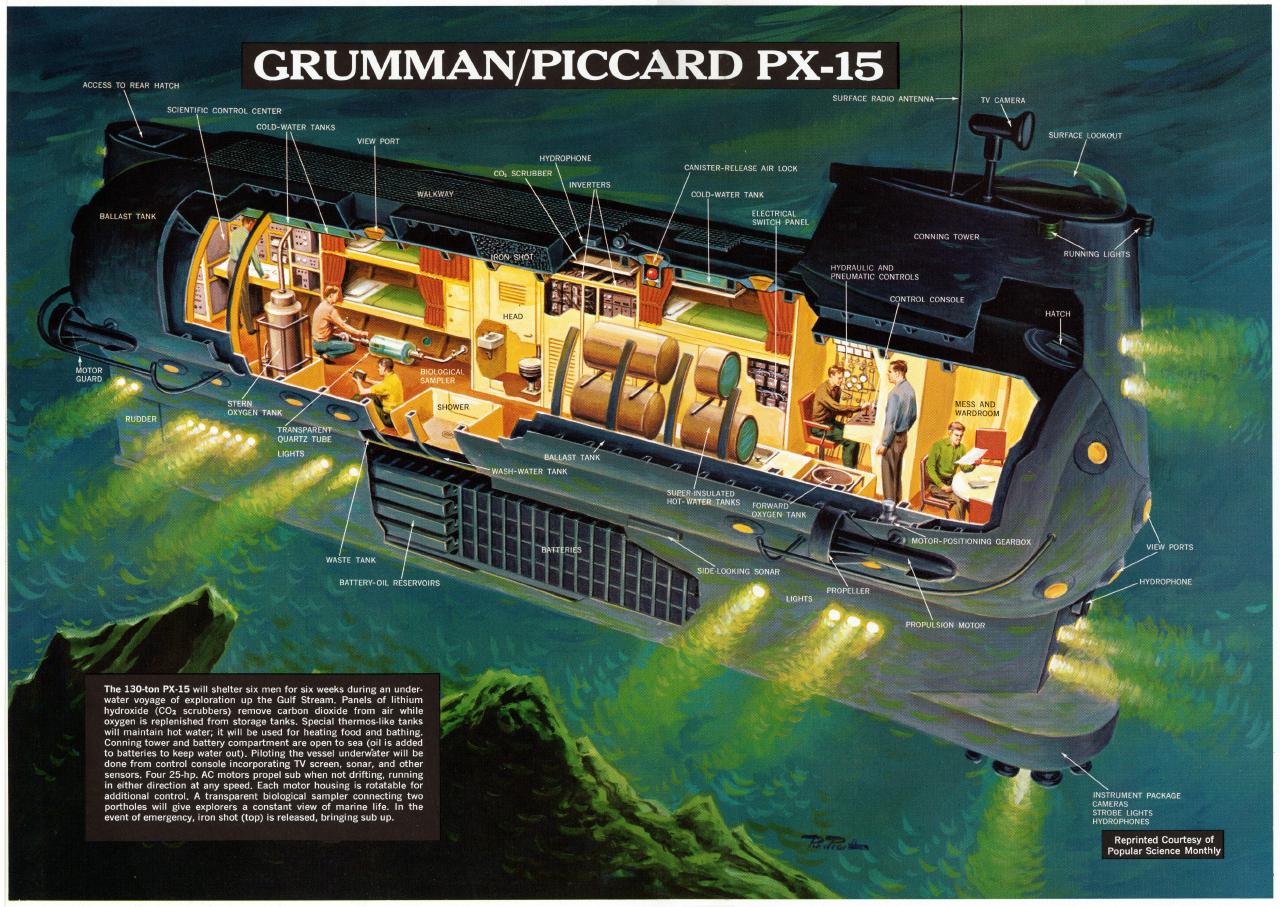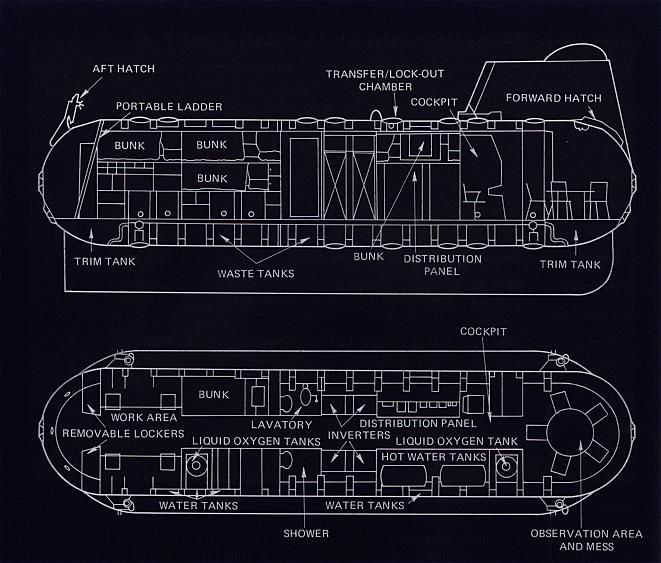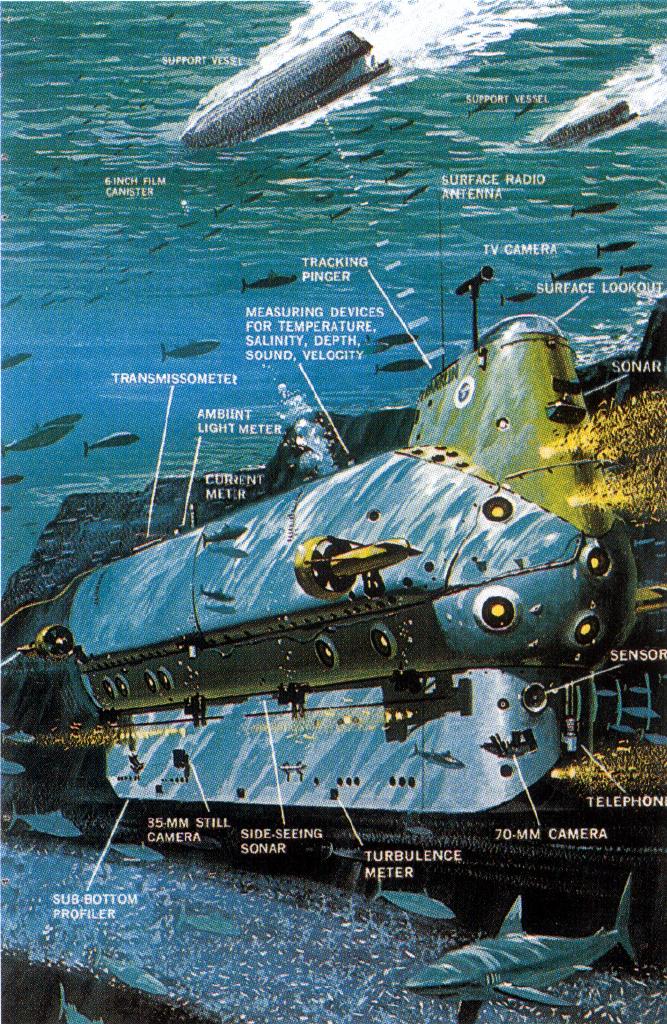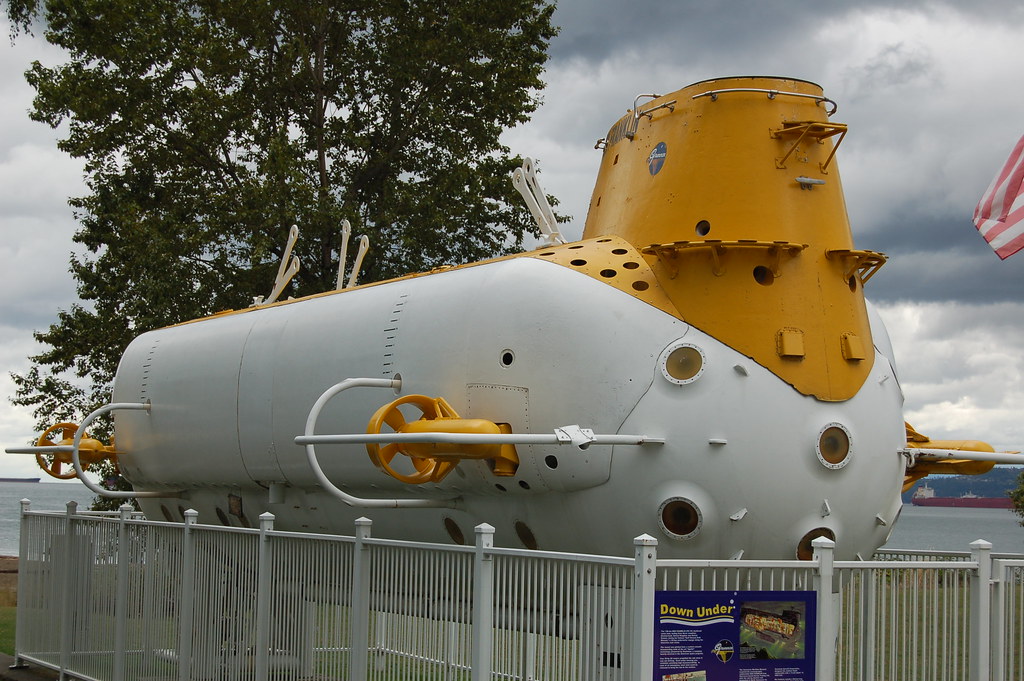Ben Franklin (PX-15)
The Ben Franklin ( name: PX -15) is a research Mesoskaph, which was built by Jacques Piccard and the Grumman Aerospace Corporation in 1967. Piccard wanted to explore with this vehicle the Gulf Stream and perform drift through this.
Piccard, who in 1960 had been established by a Bathyscaphen Trieste to this day unbroken depth record of 10,916 meters, planned from 1965 for extended research trips suitable mid-water vehicle. In the same year Piccard therefore met with Marc Bailley - Cowell of the Grumman Aerospace Corporation to draw up the plans. The construction began in 1967 as in previous Piccard Auguste Piccard (PX -8) in Switzerland Monthey; at the same time led by Grumman long-term tests in which two people lived for 100 hours in a pressure chamber. After a year, in April 1968, the car was shipped to final completion to Palm Beach ( Florida), where the boat was launched on 26 July 1968. On August 21, the year it was given the name of Benjamin Franklin, the discoverer of the Gulf Stream. This was followed by a longer test phase, which was completed in early summer 1969.
On 14 July 1969, the scientific mission of the Ben Franklin started off West Palm Beach in Florida. The objective of the mission was, first, to explore the deep current of the Gulf Stream off the east coast of the USA, on the other, the more weeks living and working together the team in tight and enclosed space. On the latter point Piccard also cooperated with NASA, the important findings for the construction of space stations conducted hoped for and medical examinations of the application. At the same time oceanographic data relevant to the environment were measured and stored for later analysis. Two ships, the mother ship Privateer and the research vessel Kellar, the PX -15 accompanied on their journey.
Participants of the dive trip were:
- Jacques Piccard as project
- Donald J. Kazimir, of the Grumman Corporation, as helmsman
- Erwin Aebersold, Piccard's employees, as second mate
- Roswell F. Busby, by the U.S. Naval Oceanographic Office, for oceanographic experiments and observations on the further use of this submarine type
- Kenneth Haigh, by the U.S. Naval Oceanographic Office, for scientific experiments
- Chester B. May, by NASA for evaluation of living conditions on board.
The mission ended 30 days and eleven hours later, on 14 August 1969, when the Ben Franklin about 500 km south of Halifax ( Nova Scotia ) showed up. At this time the boat had already traveled with the current 2,400 km. The depth varied between 200 and 600 m. The crew came to own data well with the conditions of all experiments and tasks could be completed on time, there was only a need for improvement in communicating with the outside world.
After this successful operation, the Franklin was first used for further scientific diving trips, which, inter alia, Robert D. Ballard was aboard. On April 12, 1970, the boat was badly damaged in the Bahamas on a coral reef. 1971 bought the company Horton Trading Ltd.. the boat and was planning to fix it in British Columbia and expand. This plan was not carried out, the boat was instead placed in a shipyard in Vancouver. 1999 donated Horton Trading Ltd.. the boat at the Vancouver Maritime Museum, where it was subsequently restored. Since 2002, the boat is now as a museum ship.
The boat displaces 130 tons and is about 16 m long. As a maximum depth of 2,000 feet ( 650 m) are specified, the destruction depth is 4,000 feet ( 1,300 m). The maximum of its own accord achievable with swiveling by 130 ° electric motor gondolas speed is 4 knots. The crew consisted of six men, were each carried supplies for six weeks.









